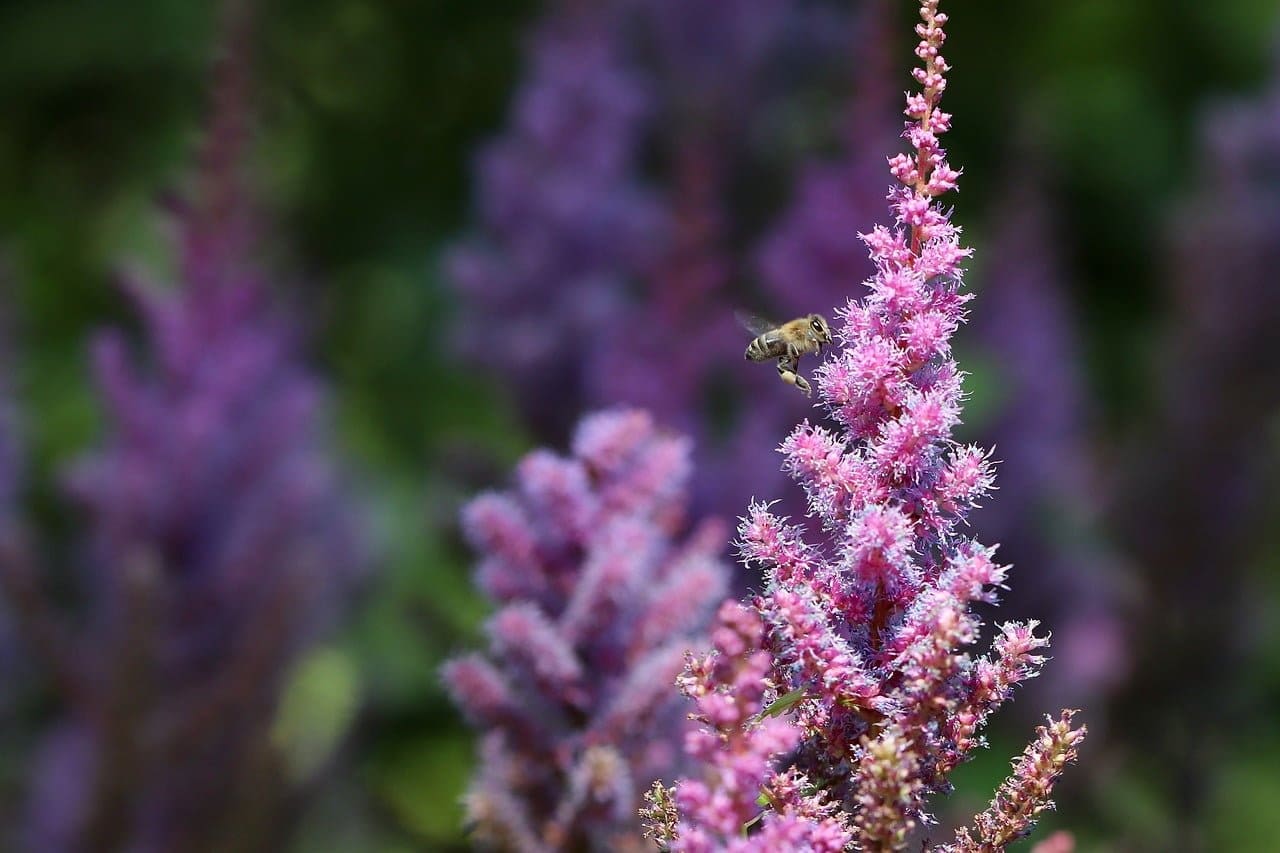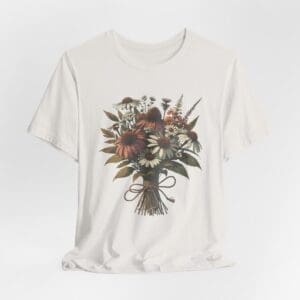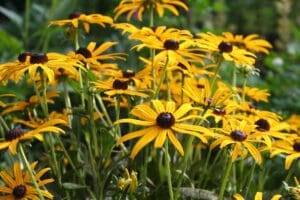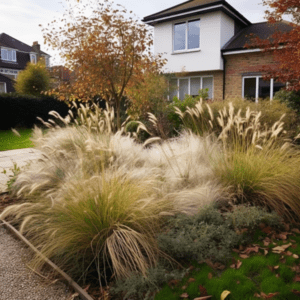Astilbe are elegant flowering perennials that bring a graceful, delicate beauty to shaded gardens and borders. With feathery plumes of flowers in shades of white, pink, red, purple and salmon, Astilbe are highly versatile plants that complement a wide range of garden designs. Learning how to grow Astilbe properly will allow you to enjoy their vibrant colours and add lovely texture to shady spots in your outdoor space.
You might also be interested in: Perennials for Wild Gardens
An Introduction to Astilbe
Astilbe are herbaceous perennials that belong to the Saxifragaceae family. There are 18 different Astilbe species, as well as countless hybrid cultivars. The name Astilbe comes from the Greek word ‘astilbe’ meaning ‘shining brightly’.
Native to mountain ravines and woodlands in Asia and North America, Astilbe plants thrive in shaded environments with dappled sunlight and rich, moist soil. Their fern-like foliage emerges in early spring, providing an attractive, mounded form. From late spring through summer, Astilbe produce delicate plumes of tiny flowers on upright stems above the foliage. The blooms last up to 6 weeks with proper care.
These shade-loving perennials come in a diverse range of heights, from dwarf cultivars under 1 foot tall to large varieties reaching 5 feet. Flowers also vary, with compact plumes on shorter types and airy, open panicles on taller Astilbe. Blooms come in many colours like white, pink, red, purple, salmon and combinations. This makes it easy to find an Astilbe variety perfect for your specific garden needs.
Choosing the Right Astilbe for Your Garden
With so many different Astilbe varieties to choose from, it’s important to select types suited to your specific growing conditions and design needs. Here are some key factors to consider:
- Sun exposure – All Astilbe require shade, but some tolerate more sunlight than others. Seek out shade-loving varieties if planting in deep shade.
- Mature size – Consider the mature height and width of the Astilbe variety to determine appropriate planting locations.
- Bloom time – Astilbe bloom at different times, with some varieties flowering in early summer and others blooming in mid to late summer. Choose a bloom time to extend the season.
- Flower colour – Select Astilbe varieties with flower colours that will complement other plants in your garden design.
- Soil moisture – While all Astilbe need consistently damp soil, some are more tolerant of dry periods than others. Seek out drought-resistant types if irrigation is limited.
Planting Astilbe for Optimal Growth
Astilbe thrive when planted in an ideal location with proper soil preparation and care. Here are some key planting guidelines:
- Site selection – Choose a shady spot with fertile, moist soil and good drainage. Dappled sunlight from trees or shrubs is ideal.
- Soil preparation – Enrich planting beds with compost or well-rotted manure before planting. Astilbe prefer soil rich in organic matter.
- Planting time – Spring or fall are best planting times for Astilbe. Avoid summer heat.
- Planting depth & spacing – Set root balls at same depth as grown in the nursery container. Space plants 12-18 inches apart depending on mature size.
- Aftercare – Water thoroughly after planting and apply mulch around plants to retain moisture.
Proper planting is key for Astilbe to establish themselves and thrive in your garden for years of beauty.
Caring for Astilbe: Water, Fertilizer, Pruning & More
Caring for Astilbe properly involves maintaining optimal growing conditions and implementing good care practices throughout the seasons:
- Watering – Keep soil consistently moist but not saturated. Use mulch and shade plants during hot, dry weather.
- Fertilizing – Apply balanced fertilizer or compost in early spring. Avoid high-nitrogen formulas that cause excess foliage over flowers.
- Pruning – Remove spent flower plumes and trim foliage after flowering. Cut plants back to the ground in late fall.
- Pest control – Prevent slugs and snails. Treat aphids, spider mites or leaf spot with organic methods if they occur.
- Winter care – Mulch plants to insulate roots from cold damage. Avoid wet soil and protect from strong winds.
Proper Astilbe care promotes healthy, vigorous plants that provide long-lasting colour. Adjust conditions and care routines as needed for your specific climate and growing environment.
Propagating Astilbe Plants for Free
Astilbe plants are easy to propagate by division or by seed, allowing you to multiply your favourites for free. Here’s how:
Division
- Divide root clumps in early spring or fall when plants are dormant.
- Use a sharp knife or spade to split plants, retaining 3-5 healthy shoots per division.
- Replant divisions immediately at the same depth, water well and mulch.
Seed propagation
- Collect seeds when seed heads mature and begin drying out.
- Sow seeds indoors in fall. Cold stratify seeds for 8-12 weeks.
- Transplant seedlings to the garden after the last spring frost. Keep soil moist.
Dividing mature Astilbe clumps every 2-3 years rejuvenates plants and yields new additions to expand your garden collection. Growing Astilbe from seeds, while slower, introduces exciting variety.
Designing With Astilbe: Plant Combinations & Display Ideas
Garden designers love Astilbe for their graceful form, delicate textures and ability to add pops of colour in shady beds and borders. Here are some ideal ways to incorporate Astilbe plants:
- Mix heights and bloom colours in border plantings for multi-season interest.
- Use short varieties to foreground larger perennials like ferns or hostas.
- Mass plant one variety in a shady bed for bold colour impact.
- Grow Astilbe in containers on shaded patios, decks or entryways.
- Underplant Astilbe with lower-growing shade lovers like begonias, impatiens or caladiums.
- Combine Astilbe with other woodland plants like azaleas, hellebores and heuchera.
Let your creativity run wild when planning out stunning shade garden designs with Astilbe as focal points or accessories. Their graceful beauty shines anywhere given the right growing conditions.
Troubleshooting Common Astilbe Problems
While relatively easy to grow, Astilbe can encounter a few potential problems. Here are some common issues and organic solutions:
- Leaf spots – Improve air circulation. Remove affected leaves. Use neem oil or sulfur fungicide if severe.
- Aphids – Knock off with a strong spray of water. Apply insecticidal soap or neem oil for heavy infestations.
- Powdery mildew – Improve air flow. Remove affected leaves. Spray with neem oil or sulfur fungicide.
- Slugs & snails – Remove by hand. Put down diatomaceous earth or iron phosphate bait.
- Flopping stems – Stake tall varieties. Grow more compact types. Improve light exposure and air circulation.
Catching problems early allows for quick, effective troubleshooting so your Astilbe remain healthy and happy all season long.
Frequently Asked Questions About Growing Astilbe
Q. How much sun do Astilbe plants need?
Astilbe thrive in partial to full shade exposures. Dappled sunlight is ideal. Avoid hot afternoon sun.
Q. What is the best fertilizer for Astilbe?
Use a balanced organic fertilizer or compost applied in early spring. Avoid high-nitrogen formulas that cause excessive leaf growth.
Q. When should I prune my Astilbe plants?
Prune spent flower plumes back to the foliage after blooming ends. Cut plants back entirely in late fall once they go dormant.
Q. How do I winterize my Astilbe plants?
Add mulch around the base to insulate plant roots. Avoid wet winter soil which can lead to root rot. Protect from strong winds.
Q. How often do I need to divide Astilbe plants?
Divide root clumps every 2-3 years in early spring or fall to maintain plant vigour and prevent overcrowding.
The Complete Guide to Growing Astilbe: Key Takeaways
Growing Astilbe successfully just takes the right conditions and care:
- Select Astilbe varieties suited to your specific growing environment.
- Plant in prepared, enriched soil in a shady spot.
- Water consistently and fertilize lightly.
- Prune spent blooms and foliage at the right times.
- Propagate by dividing plants or sowing seeds.
- Use Astilbe elegantly in garden beds, borders and containers.
- Prevent and treat potential pest or disease issues organically.
With the proper planting, care and maintenance, Astilbe plants will reward you with years of delicate, colourful blooms and graceful presence in shady garden beds, borders and pots.
Now that you know how to grow astilbe properly, it’s time to find your favourite varieties and choose the perfect spot to add their graceful beauty to your garden.







